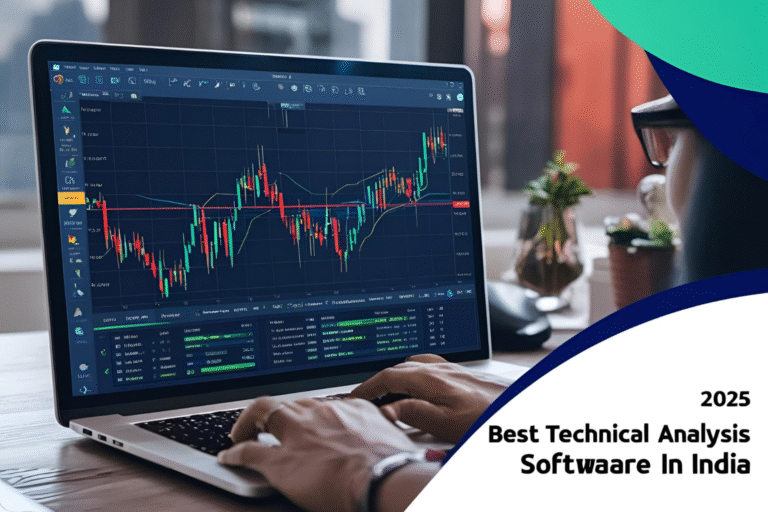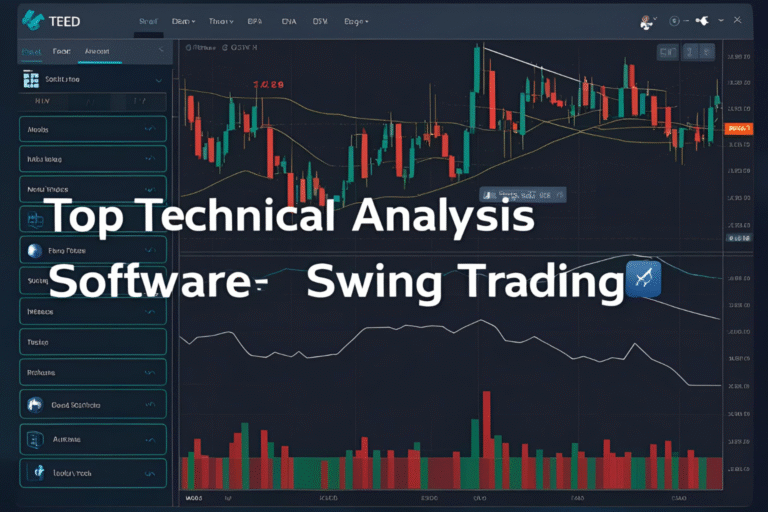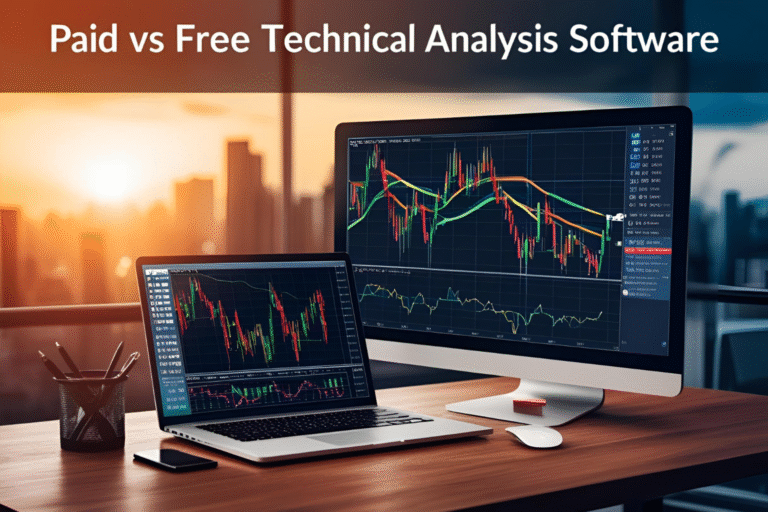Features to Look for in a Technical Analysis Platform
Choosing the right technical analysis platform is one of the most important decisions for a trader. Whether you’re trading intraday, swing, or long-term positions, your software should support your strategies with reliable tools, speed, and flexibility.
In this guide, we break down the key features you should look for in a technical analysis platform, especially if you’re trading on Indian stock markets like NSE and BSE.
1. Real-Time and Historical Data Support
Accurate price data is non-negotiable in technical analysis.
What to Look For:
-
Real-time streaming quotes
-
EOD (End-of-Day) data
-
Historical data access (preferably 5–10 years)
Platforms with this feature: TradingView, Amibroker (with data provider), Spider Software
2. Advanced Charting Capabilities
Charts are the foundation of any technical setup.
Must-Have Chart Features:
-
Multiple chart types (candlestick, OHLC, Heikin Ashi)
-
Custom timeframes (1-min to monthly)
-
Interactive zoom and scroll
-
Overlay comparisons
Bonus: Ability to draw trendlines, Fibonacci levels, and mark patterns.
3. Wide Range of Indicators
A good platform should offer at least 100+ pre-built indicators with the option to add custom ones.
Popular Indicators to Expect:
-
RSI, MACD, Bollinger Bands
-
Moving Averages (SMA/EMA)
-
Supertrend, Ichimoku
-
Volume-based indicators (OBV, VWAP)
Tip: Look for platforms that allow scripting (like AFL or Pine Script) for custom strategies.
4. Custom Scanners and Screeners
Scanners allow you to filter stocks based on technical conditions (e.g., RSI < 30, EMA crossover).
Ideal Features:
-
Real-time stock screening
-
Custom rule creation
-
Pre-built swing/intraday screeners
-
Filter by volume, price action, and indicators
Great for: Traders using Chartink, Zerodha Streak, or TradingView.
5. Backtesting Functionality
For those who want to validate strategies before risking real money.
What to Look For:
-
Ability to test across historical data
-
Detailed trade logs and equity curve
-
Custom position sizing and risk parameters
-
Strategy optimization tools
Best Options: Amibroker, MetaStock, TradingView (Pro+)
6. Alerts and Notifications
Missed signals mean missed profits. Good software lets you stay updated.
Types of Alerts:
-
Price crossovers
-
Indicator-based triggers (e.g., MACD crossover)
-
Volume spikes or breakouts
-
Mobile push, email, or SMS alerts
Popular Tools: TradingView, Dhan, Upstox Pro
7. User Interface and Speed
A cluttered, laggy interface can affect decision-making.
Ideal Qualities:
-
Clean, intuitive dashboard
-
Fast chart loading
-
Easy navigation between watchlists, indicators, and timeframes
Mobile compatibility is essential if you trade on the go.
8. Integration with Brokers
Some platforms allow direct trade execution from the chart itself.
Integration Benefits:
-
Faster execution
-
Fewer manual errors
-
Better syncing of analysis and action
Brokers with platform integration: Zerodha (Kite), Fyers, Dhan
9. Affordability and Plans
A good platform doesn’t have to be expensive.
Options:
-
Free (limited tools): Chartink, basic TradingView
-
Low-cost monthly plans: Dhan, Fyers
-
Premium tools for pros: Amibroker, MetaStock, Spider
Choose based on your trading volume, strategy complexity, and required features.
10. Community and Support
Good support and an active user community can fast-track your learning.
Look For:
-
Video tutorials and documentation
-
Webinars or training sessions
-
Support ticket system or live chat
-
Community forums or shared indicators
Final Thoughts
A reliable technical analysis platform should not only match your current trading needs but also scale with your growth. For Indian traders, it’s best to choose a platform that supports NSE/BSE, offers real-time tools, and provides flexibility in strategy execution.
Whether you’re using TradingView for charts, Chartink for scans, or Amibroker for backtesting, always test your tools before committing long-term.
FAQs
Q1: What’s the best platform for beginners?
A: TradingView and Dhan offer beginner-friendly interfaces and essential tools for free.
Q2: Is free software enough for serious trading?
A: It can be for basic strategies, but paid plans unlock more advanced features like backtesting and alerts.
Q3: How important is broker integration?
A: It’s very useful for reducing trade execution time and avoiding manual errors.
Q4: Which platforms support custom indicators?
A: Amibroker (AFL), TradingView (Pine Script), and MetaStock support custom indicators and strategies.
Q5: Should I choose a desktop or web-based platform?
A: Web platforms are flexible and mobile-friendly; desktop platforms like Amibroker offer more power for strategy development and testing.




